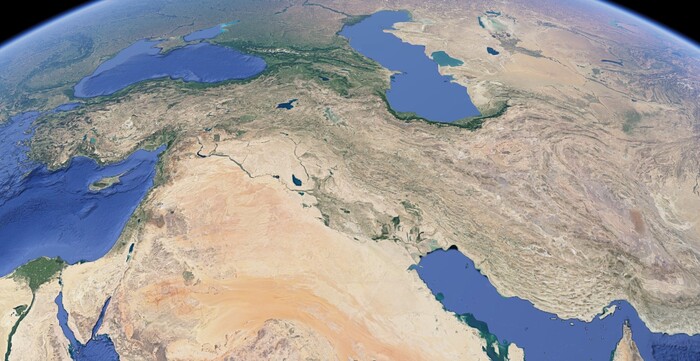DNA extracted from the bones of more than 350 people who lived tens of thousands of years ago has just brought to light totally unknown chapters of Europe's prehistory.
The new data identifies the different groups of hunters and gatherers who lived before and after one of the worst catastrophes to ever hit the continent: the last glacial maximum, between 25,000 and 19,000 years ago.
At that time, ice covered large areas of the territory and most of the continent was left uninhabitable.
It is estimated that just before the arrival of the cold, some 100,000 people lived in western and central Europe.
The irruption of the ice and the drop in temperatures decimated the human populations until leaving only small isolated groups of about 50 people.
It was the closest thing to an apocalypse for Europeans at the time.
The new study, published today in
Nature
, includes genetic data from 116 new individuals from 14 countries that had not previously been analysed.
In total, it spans from the arrival of the first
Homo sapiens
to Europe, about 45,000 years ago, until about 5,200 years ago, when the revolution of agriculture and sedentarism had already triumphed throughout the continent, which would make civilization possible, but which also ended the genuine nomadic way of life of our species.
The first sapiens to arrive on the continent after leaving Africa met Neanderthals, the native human species of Europe.
They had sex and children with them, but mysteriously went completely extinct leaving no genetic trace in today's Europeans.
Neanderthals also disappeared around 40,000 years ago for unknown reasons, but they did leave a few drops of DNA in all living humans outside of Africa.
The new work shows that before the ice age, Europe was divided between two great lineages of sapiens that descended from migratory waves after the first.
In present-day Italy, Austria, and the Czech Republic lived groups whose ancestors came from western Russia.
Spain and France were dominated by other groups whose roots went back at least 35,000 years to present-day Belgium.
refuge in the south
Until now it was thought that when the ice age began, humans migrated en masse to the south.
The Pyrenees and the Alps would have functioned as ice walls that protected those who were already inside the Iberian and Italian peninsulas, and left the rest outside.
But genetic data now shows that in Italy human populations have gone completely extinct.
"It's something brutal," sums up Vanessa Villalba-Mouco, a molecular biologist from Zaragoza who works at the Max Planck Institute for Evolutionary Anthropology (Germany) and is a co-author of the study.
"There is a total replacement of populations and for now we do not know why it happened," she highlights.
Male skull and stone tools from Groß Fredenwalde (Germany), dated 7,000 years ago.Volker Minkus
A second study published today in
Nature Ecology and Evolution
looks at the remains of one of the only known survivors of the ice age.
He is an adult man of whom archaeologists found a single tooth in the Malalmuerzo cave, in Granada, among cave paintings of horses.
One of the most distinctive features of the Europeans of that time was the whiteness and health of their teeth, since they did not eat sweets and bread had not yet been invented, foods that promote cavities.
The analysis of these remains shows that that man lived 23,000 years ago, that is, he survived the worst of the last ice age.
The DNA indicates that it was related to hunters and gatherers who lived before the arrival of the cold and, much more important, that its genetic legacy survived the ice ages and is still present in today's Europeans, although greatly diluted after millennia of mixing. and remixes.
The remains of two other survivors have been found in Asturias and the south of France.
“This work confirms that the Iberian Peninsula and the south of France were the only known refuge for the survivors of the last ice age”, highlights the geneticist Carles Lalueza-Fox, co-author of this second work with Villalba-Mouco.
“Until now we knew from many animal remains that the Peninsula was the only possible home for a multitude of animals such as brown bears, hedgehogs, shrews and also for trees such as oak.
Now we see that it also allowed the Europeans of the time to survive ”, he adds.
elegant prehistoric art
The remains of Malalmuerzo identify for the first time the genetics associated with the Solutrean culture, characterized by spearheads and arrows of exceptional finesse, as well as artistic representations of animals and other unique scenes in Europe at the time.
It is now clear that this culture descended from earlier European sapiens, who had created some of the most elegant early works of prehistoric art, such as the Chauvet cave cats in France, ascribed to the Aurignacian culture.
The work also confirms that there was no contact between the Peninsula and North Africa at that time, despite the fact that the glaciation reduced the extension of the Strait of Gibraltar.
After the glacial maximum, the inhabitants of the Peninsula left their refuge and began to populate the rest of Europe.
But already at that time a new human lineage had emerged with roots in the Balkans and on the Anatolian peninsula in Turkey.
In a short time they repopulated Italy and also spread to the rest of the continent until they became the new dominant lineage in Europe, characterized by a new culture —the Magdalenian— to which another world pinnacle of rock art is attached, the Altamira bison.
Around 9,000 years ago, a new population cataclysm occurred in Europe with the arrival of the greatest revolution in history: agriculture, livestock farming and sedentary lifestyles at the hands of immigrants from Mesopotamia.
Many nomadic hunting tribes mixed with the new immigrants and embraced their way of life.
Others clung to their tradition and continued to survive in ever smaller and more isolated groups.
DNA now shows how these nomadic populations physically looked less than 14,000 years ago.
Those who came from southern Europe had dark skin and blue eyes and those from the north had pale complexions and dark eyes.
Roberto Risch, a prehistorian from the Autonomous University of Barcelona, highlights the value of these two new studies in order to understand a time from which there are no written testimonies, only stone tools, vessels, paintings and human remains.
Now, DNA allows us to disprove some theories and confirm others.
“Most importantly, these studies show us that humans back then were essentially like us.
Faced with climate change so rapid that it could be noticed in a single generation, some groups reacted in one way and others in another, and these social decisions determined their destiny.
Those who opted for immobility and denial of what was happening, disappeared ”, he highlights.
You can follow
MATERIA
on
,
and
, or sign up here to receive
our weekly newsletter
.




/cloudfront-eu-central-1.images.arcpublishing.com/prisa/4RITWNCKAZFB3I3MBXYYKH6YDI.jpg)










